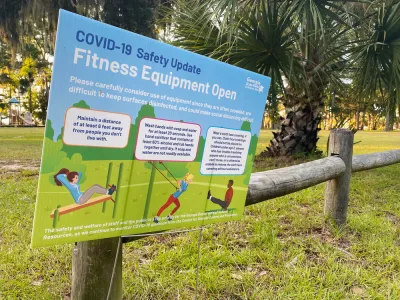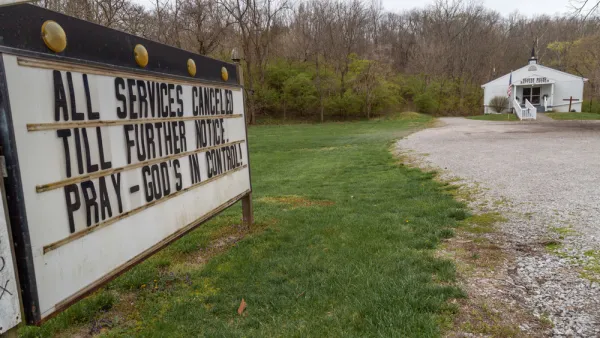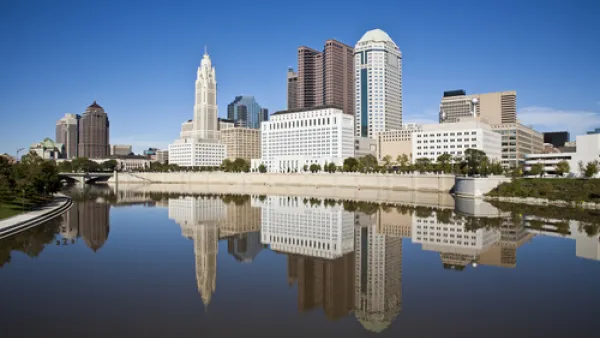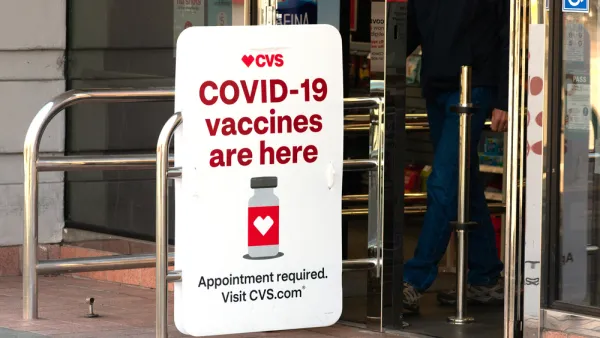Local parks and green spaces that enable safe social distancing have never been more important to people living in cities. The Trust for Public Land has released a new report showing their importance and the challenges they are facing.

"The Centers for Disease Control and Prevention now lists visiting parks and recreational facilities — particularly those 'parks that are close to your home' — as a way to protect yourself and others from covid-19," writes Christopher Ingraham for The Washington Post.
But for tens of millions of Americans, that’s easier said than done; according to the Trust for Public Land (TPL), a nonprofit group that works to protect parks and other outdoor public spaces roughly 100 million Americans don’t have a public park within a 10-minute walk of their home.
“For far too many communities, quality green space where families can recreate and practice social distancing is simply not available,” said Diane Regas, the president and chief executive of TPL.
Ingraham is long familiar with the importance of parks and public health, reporting on studies linking spending time in green spaces with an enhanced sense of well-being and increased happiness. Unfortunately, like so many other urban amenities and necessities, a major problem is the inequitable access to urban green spaces.
Using CDC data, for instance, Brookings Institution researchers found that, at the metropolitan-area level, “regions with lower park access tend to have higher poverty rates.”
Studies also have shown that areas that are whiter, richer and more highly educated also have better access to urban green spaces.
TPL, whose mission includes "creating parks for people, ensuring healthy, livable communities for generations to come," has released a 16-page special report, "Parks and the Pandemic" (free download after agreeing to accept monthly newsletter).
The pandemic highlights that in too many communities, access to the outdoors is considered a privilege when it should be a right. With the data to pinpoint where parks are most needed, we can transform the outlook for outdoor equality across the nation.
Related in Planetizen:
FULL STORY: Pandemic underscores how public parks shape public health

National Parks Layoffs Will Cause Communities to Lose Billions
Thousands of essential park workers were laid off this week, just before the busy spring break season.

Retro-silient?: America’s First “Eco-burb,” The Woodlands Turns 50
A master-planned community north of Houston offers lessons on green infrastructure and resilient design, but falls short of its founder’s lofty affordability and walkability goals.

Delivering for America Plan Will Downgrade Mail Service in at Least 49.5 Percent of Zip Codes
Republican and Democrat lawmakers criticize the plan for its disproportionate negative impact on rural communities.

Test News Post 1
This is a summary

Test News Headline 46
Test for the image on the front page.

Balancing Bombs and Butterflies: How the National Guard Protects a Rare Species
The National Guard at Fort Indiantown Gap uses GIS technology and land management strategies to balance military training with conservation efforts, ensuring the survival of the rare eastern regal fritillary butterfly.
Urban Design for Planners 1: Software Tools
This six-course series explores essential urban design concepts using open source software and equips planners with the tools they need to participate fully in the urban design process.
Planning for Universal Design
Learn the tools for implementing Universal Design in planning regulations.
EMC Planning Group, Inc.
Planetizen
Planetizen
Mpact (formerly Rail~Volution)
Great Falls Development Authority, Inc.
HUDs Office of Policy Development and Research
NYU Wagner Graduate School of Public Service





























